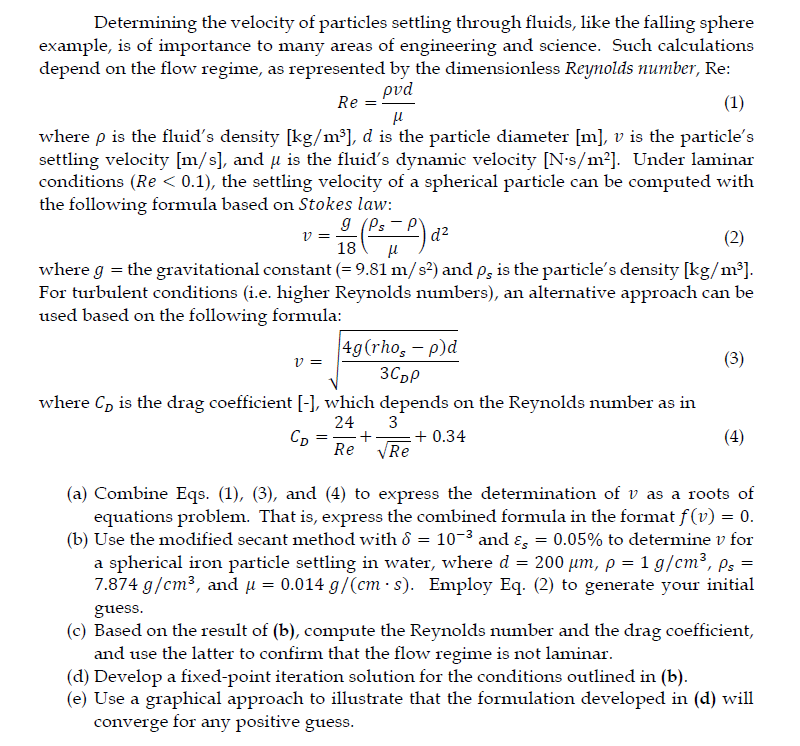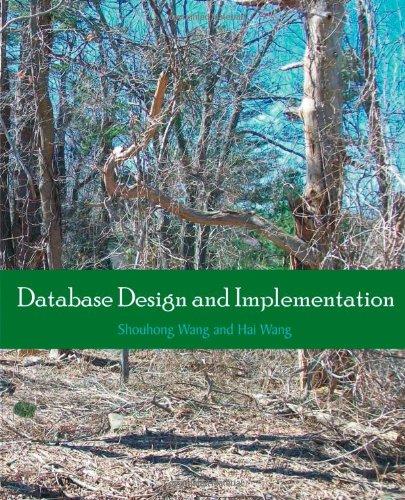Question
PLEASE NOTE: I only need help with Questions (d) and (e). Please provide the Matlab code for the problem and plotting the graph. If possible,

PLEASE NOTE: I only need help with Questions (d) and (e). Please provide the Matlab code for the problem and plotting the graph. If possible, please also provide the code for graphing the true percent relative error.
Here are the solutions to Questions (a), (b), and (c) from another Chegg Solution:
a) for low reynolds number we get that v= g/18(s-)d^2
and for high reynolds number v=square root of (4g(s-)d/3Cd)
now Cd= 24/Re + 3/Re^-2 +.34
putting Cd in the second equation we get
v=square root of (4g(s-)d/3[24/Re + 3/Re^-2 +.34])
putting Re=dv/ we get
v=square root of (4g(s-)d/3[24/dv + 3^-2/(dv)^-2 +.34])
or v=square root of (4gd(s-)/3[24/dv+3^-2^-2/(dv)^-2 +.34)
b) using P8.48.2 we know that
v= g/18(s-)d^2 =9.81/18(7.874-1)200*10^-6= 749.27*10^-6 units
c) Re= dv/= 1*200*10^-6* 749.27*10^-6 /.014= 1.07*10^5
that means flow is turbulent.
So, using Re we get Cd= 24/1.07*10^5 +3/ +.34 = .349224
+.34 = .349224
Step by Step Solution
There are 3 Steps involved in it
Step: 1

Get Instant Access to Expert-Tailored Solutions
See step-by-step solutions with expert insights and AI powered tools for academic success
Step: 2

Step: 3

Ace Your Homework with AI
Get the answers you need in no time with our AI-driven, step-by-step assistance
Get Started


